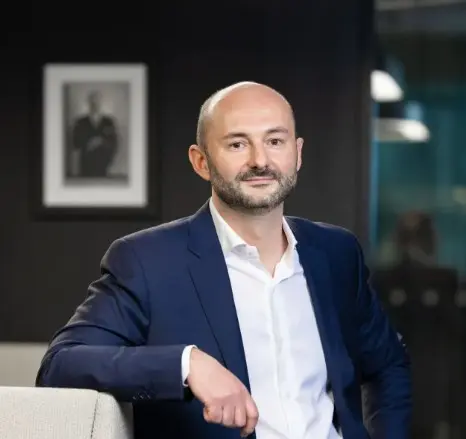In multi-asset capabilities, back office systems lead their front office counterparts
ByBrian Collings, CEO, Torstone Technology
Overthe years, we have seen increasing demand from financial institutions for aconsolidated view of risk and reporting across asset classes. This has been driven, to some extent, by anincrease in multi-asset trading, but more so by post-trade regulation.
As aresult, back office systems can easily accommodate multi-asset class processingthanks to upgrades undertaken, unlike their front office system counterpartswhich have not benefited from the same level of development, or at least not tothe same extent. Front office technology providers are now playing catch-up withback office systems to enable them to effectively service financial institutionswhich are increasingly seeking to provide multi-asset class trading.
Sowhat is driving the increase in multi-asset trading? Cost is the firstconsideration, as banks reconfigure their business models due to industry andregulatory pressures, IT and staff budgets are being scrutinized. As a result,trading desks have been rationalized and multi-asset trading teams created as away to manage the same number of clients with fewer resources.
Thesecond driver for multi-asset trading is that the buy-side is increasinglylooking to diversify investment portfolios to include products such asderivatives in order to create greater returns. Simultaneously, pension fundsand asset management firms have increasingly needed to hedge their liabilitiesusing derivatives such as futures and interest rate and inflation swaps. Subsequently, front and back office systemswhich can cope with such requirements are becoming ever more critical.
Thefinal driver has been evolving regulation and the need for both the sell-sideand buy-side to comply with new rules such as those for short selling, reportingand risk. In the long term, integrating trading across multiple asset classesis a much more effective way of ensuring compliance with the new rules ratherthan trying to combine trading across disparate platforms.
Unfortunately,while the imperative to trade cross asset class is there, in many cases it isstill difficult to do so. The tradingdesks of banks were traditionally created along asset class lines and in mostcases, operated as vertical silos. The creation of a multi-asset trading deskrequires a group of professionals who have a broad knowledge of a diverse setof asset classes and this runs counter to past requirements.
Thatsaid, there is a convergence in trendsaffecting asset classes which is requiring those on trading desks to developtheir multi-asset skills so they become 'all rounders'. For example, due to theimpact of regulation, fixed income and derivatives markets are becoming moreelectronic and therefore are experiencing greater similarities in product characteristicssuch as increased standardisation.
In addition, increasingly, heads ofmulti-asset trading desks tend to be product generalists, capable of impartingtheir multi-asset class knowledge and skills to the rest of their team.
Whilethese are encouraging signs, the slow evolution of multi-asset trading deskscan in large part be attributed to the limitations of the front office tradingand order management systems which underpin them. For example, electronic trading platformswhich are currently in existence tend to focus on a single asset class.
Thiscan be seen currently in the fixed income market where there has been aproliferation of electronic trading platforms targeted at the buy-side. Whilethis will of course increase efficiency in fixed income execution, it willstill require each financial institution to connect to multiple platforms.
As a result, complexity will be increased dueto the use of disparate systems. Order management systems are not much betterin terms of their multi-asset class offerings - while there are aspirations toprovide cross asset class functionality, they are not there yet.
Thestory in the back office is very different. With shortcomings in themulti-asset class capabilities of front office trading systems, manyinstitutions rely on the cross asset capabilities of back office systems, whichare both more advanced and currently well equipped to provide a holistic viewof their market positions.
Whenfinancial institutions conduct cross-asset class trading, they require aconsolidated view of risk and reporting. In particular, there is increasingpressure on firms to have a comprehensive overview of their market position,which is accurate, up-to-date and easily accessible. This allows sell-sideinstitutions to quickly identify their holistic counterparty and asset classexposure.
Such multi-asset class transparency is essential in times of marketvolatility, and in order to demonstrate risk management and complianceprocedures to policymakers and regulators.
Themulti-asset class capabilities of back office systems can, in the main, beattributed to recent regulations such as the European Market InfrastructureRegulation, which was implemented in the aftermath of the global financialcrisis and which aimed to improve the robustness of post-trade processes suchas reporting and collateral management.
Another element of recent regulation is the requirement for seniormanagement of all financial institutions to have a real-time, consolidated view of portfolios to enable them to be ableto understand on demand, how potential market events will impact their risk positions. These requirements can only be met by having amulti-asset, automated back office technology platform in place.
Ofcourse, over time the multi-asset capabilities of trading and order managementsystems will catch-up with those of back office platforms. In the meantime, themulti-asset class capabilities of the latter can help to patch up therelatively siloed systems of the former, enabling financial institutions to fulfilltheir consolidated risk, reporting and accounting obligations to seniormanagement, clients and regulators. This interim solution should provide frontoffice systems providers with valuable time in which to develop all-singing andall-dancing multi-asset trading capabilities.


